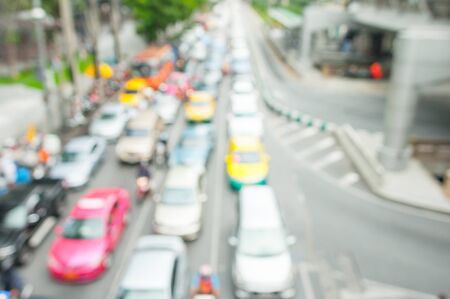Understanding Traffic Patterns
Before you hit the road in any major U.S. city, it’s crucial to understand the local traffic patterns that can impact your drive. Rush hour—typically between 7–9 AM and 4–6 PM—brings heavy congestion as commuters flood highways and main streets. But it’s not just about weekdays; weekends can be busy too, especially around shopping centers, stadiums, or downtown hotspots when there are big events happening. Keep an eye on local news or use navigation apps like Google Maps or Waze to track live traffic updates and get a heads-up about accidents, construction zones, or parades that might slow you down. Being aware of these trends helps you plan ahead, choose alternate routes, and avoid getting stuck in gridlock.
2. Planning Your Route Ahead
When it comes to tackling heavy traffic and congested areas in the U.S., a little planning can make a world of difference. Thanks to modern technology, you don’t have to rely on guesswork anymore—smart tools are right at your fingertips! Before hitting the road, check out mobile apps and GPS features that provide real-time traffic updates, alternative route suggestions, and even alerts for accidents or road closures.
Top Apps and Features for Stress-Free Navigation
| App/GPS Feature | Main Benefit | Best For |
|---|---|---|
| Google Maps | Real-time traffic info, alternate routes, accident alerts | Everyday drivers & commuters |
| Waze | User-reported hazards, police sightings, live updates | Urban drivers looking for the quickest path |
| Apple Maps | Sleek interface, Siri integration, traffic conditions | iPhone users seeking convenience |
| In-car GPS (e.g., Garmin) | No reliance on cell signal, traffic alerts (if supported) | Long-distance travelers & rural areas |
| Local DOT Websites/Apps | Official construction notices, regional updates | Staying updated on major projects or closures nearby |
How to Make the Most of These Tools
- Set Your Route Before You Leave: Take a minute before pulling out of your driveway to check current traffic conditions and choose the best route.
- Enable Voice Guidance: Hands-free directions keep your focus on the road while still keeping you informed.
- Check for Real-Time Alerts: Turn on notifications for accidents, slowdowns, and alternate routes so you can pivot quickly if needed.
- Avoid Peak Times: Many apps show expected congestion based on time of day. If possible, adjust your schedule to steer clear of rush hours.
- Have a Backup Plan: Know at least one alternative route in case your primary way gets blocked by an unexpected jam or accident.
A Pro Tip for American Drivers:
If you’re traveling through an unfamiliar city or heading out during major events (like sports games or concerts), check local news or event websites for special advisories—they sometimes offer tips that apps might miss. By planning ahead with these digital resources and staying flexible, you’ll be able to avoid the worst backups and get where you need to go safely and efficiently.

3. Staying Calm and Focused
Getting stuck in bumper-to-bumper traffic can quickly test anyone’s patience, but keeping your cool is key to staying safe. Here are some practical tips to help you stay calm and focused when navigating through heavy traffic or congested areas:
Keep Your Emotions in Check
First things first—don’t let frustration take the wheel. Deep breaths go a long way. If you feel stress building up, try inhaling slowly through your nose and exhaling through your mouth. Remind yourself that getting upset won’t get you there any faster and could actually distract you from the road.
Stay Alert at All Times
Congested roads are unpredictable. Keep your eyes moving and scan your mirrors frequently. Watch out for sudden stops, aggressive drivers, or people trying to cut in. Avoid distractions like using your phone or fiddling with the radio, even if traffic is crawling.
Practice Patience
Give yourself extra time for your commute whenever possible—being in a rush only adds unnecessary pressure. If someone cuts you off or traffic isn’t moving, resist the urge to honk or react aggressively. Remember: everyone else wants to get where they’re going too.
Helpful Stress-Reducing Habits
Create a relaxing driving environment by playing your favorite playlist, podcast, or audiobook at a reasonable volume. Adjust the air conditioning or open a window for fresh air. Keeping water and healthy snacks handy can also help you stay comfortable during long waits.
Avoid Multitasking
It might be tempting to check emails or eat while stuck in traffic, but multitasking increases your risk of missing important changes on the road. Stay focused on driving, and save other tasks for when you’re safely parked.
By practicing these habits regularly, you’ll be better equipped to handle heavy traffic with patience and alertness, making your drive safer for everyone on the road.
4. Safe Driving Techniques in Congested Areas
When you’re stuck in heavy traffic or navigating through a packed city center, mastering a few safe driving techniques can make all the difference for your peace of mind and safety. Defensive driving isn’t just about reacting to what’s happening; it’s about anticipating what might happen next. Here’s how you can put defensive driving into action and handle crowded roads like a pro.
Defensive Driving Tactics
Stay alert and scan your surroundings constantly. Watch for sudden stops, aggressive drivers, pedestrians darting out, or cyclists sharing the lane. Keep your hands on the wheel and minimize distractions—yes, that includes putting down your phone, even at red lights. When possible, keep an escape route in mind, whether it’s a shoulder or another lane, just in case things get hairy.
Maintaining Proper Following Distances
Tailgating is tempting when traffic crawls, but it’s one of the top causes of fender benders in congestion. The general rule is the “three-second rule,” which means there should be at least three seconds between you and the car ahead. In bumper-to-bumper conditions, do your best to keep enough space to stop safely if needed—especially if you’re on slick roads or driving a larger vehicle.
| Condition | Recommended Following Distance |
|---|---|
| Normal Traffic | At least 3 seconds |
| Heavy Rain/Snow | 5+ seconds |
| Bumper-to-Bumper | As much as possible (do not block intersections) |
How to Safely Merge or Change Lanes
Merging and lane changes can be tricky when every inch counts. Use your turn signals early and check mirrors and blind spots before moving over. Don’t force your way into a lane; instead, wait for a clear gap and make your move smoothly. Avoid last-minute decisions—if you miss your exit or turn, just circle back rather than making risky maneuvers.
Quick Tips for Merging in Congested Traffic
- Signal early—let others know your intentions well ahead of time.
- Pace yourself with the speed of traffic in the lane you want to enter.
- Be patient and courteous; sometimes letting someone else in makes everyone’s drive smoother.
Remember, keeping calm and practicing these safe driving techniques will help you reduce stress and arrive at your destination without incident—even during rush hour gridlock.
5. Dealing with Aggressive Drivers and Road Rage
Heavy traffic can bring out the worst in some drivers, leading to tailgating, sudden lane changes, or even outright road rage. Knowing how to handle these situations calmly and safely is key to protecting yourself and everyone around you.
Don’t Take It Personally
If someone is riding your bumper or cutting you off, remember: it’s not about you. Stay calm, avoid making eye contact or responding with gestures, and focus on your own driving. Responding emotionally only escalates the situation.
Give Space to Aggressive Drivers
If someone is tailgating you, signal and change lanes when safe—let them pass. If a driver cuts you off, slow down slightly to increase your following distance rather than speeding up or retaliating. The goal is to keep a buffer between you and aggressive motorists.
Stay Predictable and Courteous
Use your turn signals early and avoid sudden moves. If traffic is merging or congested, practice the “zipper merge” and let others in when possible. Small acts of courtesy can defuse tension on the road.
If Confrontation Occurs
Never engage with an angry driver—don’t roll down your window or get out of your car. If you feel threatened, drive to a public place like a gas station or police station. In extreme cases, call 911 for help.
Remember, keeping a cool head and prioritizing safety over pride will help you navigate through heavy traffic without unnecessary risk or stress.
6. What To Do in Case of Emergency
Stay Calm and Assess the Situation
If you experience a breakdown, collision, or medical emergency while stuck in heavy traffic, staying calm is your first priority. Take a deep breath, quickly assess any injuries, and check your surroundings for immediate dangers.
Signal and Move to Safety
If your vehicle is drivable and it’s safe to do so, turn on your hazard lights right away. Carefully try to maneuver your car to the shoulder or as far out of the active lane as possible. In congested areas where space is tight, even a few feet can make a difference in keeping you safe from passing vehicles.
Contact Emergency Services
Call 911 if there are injuries or you need police or medical help. Be prepared to give your exact location—look for exit numbers, mile markers, or nearby landmarks. Explain the situation clearly so dispatchers can send the right assistance.
Stay Inside Your Vehicle if Unsafe Outside
If you’re on a busy highway or crowded city street and stepping outside would put you at risk, stay inside with your seatbelt fastened until help arrives. Keep doors locked and windows up. If you must leave the car (for example, if there’s smoke or fire), move to a safe spot away from traffic as quickly as possible.
Communicate with Other Drivers
If possible and safe, use flares, warning triangles, or brightly colored clothing to signal other drivers. This helps prevent secondary accidents and lets others know there’s an emergency ahead.
Prepare for Delays in Help
In heavy traffic, response times may be slower than usual. Keep an emergency kit in your car with water, snacks, a flashlight, phone charger, and first aid supplies so you’re not caught off guard while waiting for assistance.
Summary
Emergencies during gridlock are stressful but manageable if you remain calm and follow these steps. Prioritize safety by signaling early, moving out of harm’s way if possible, contacting emergency services promptly, and staying prepared for delays until help arrives.

